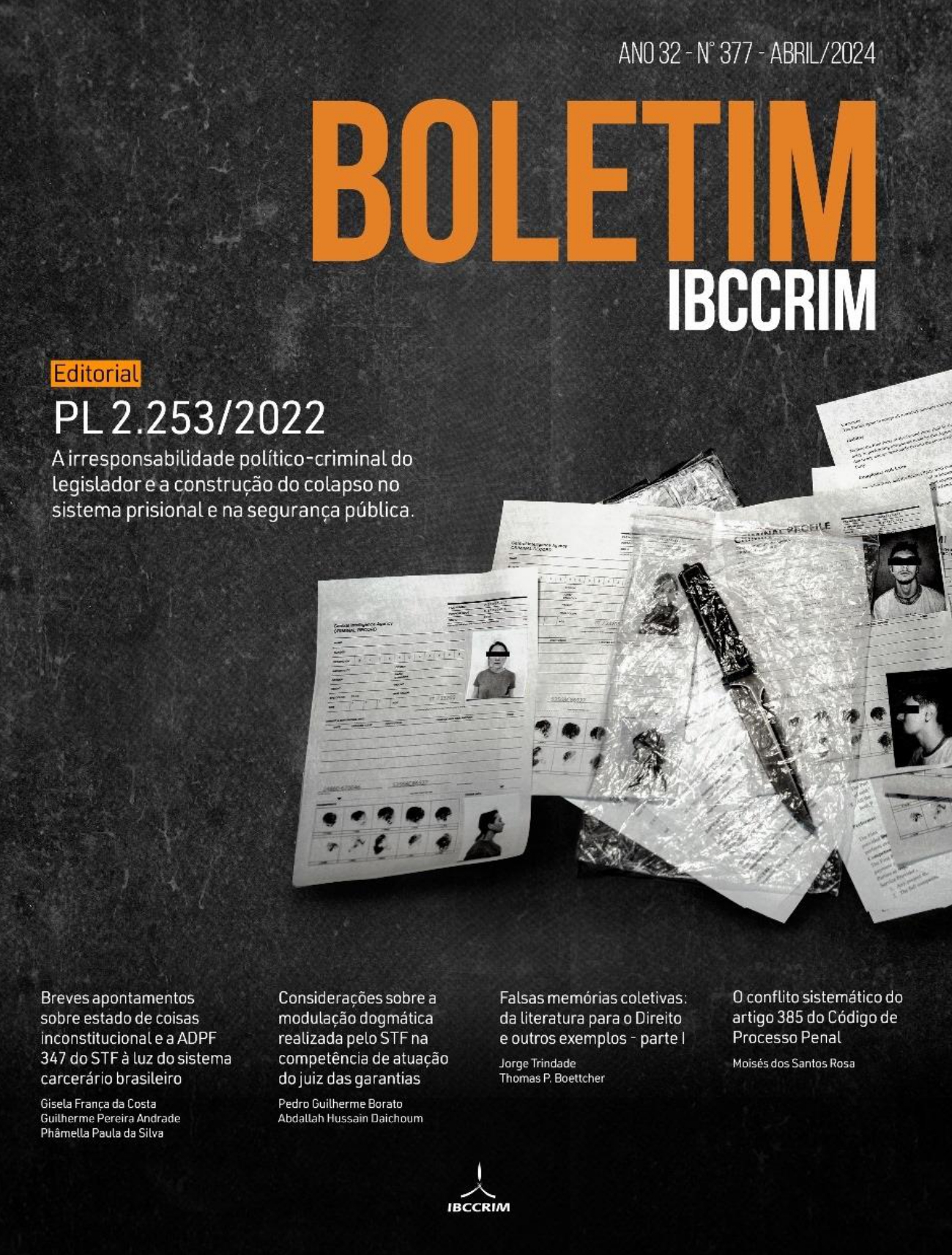The applicability of restorative justice in acts of administrative improbity and in crimes against public administration
Views: 200DOI:
https://doi.org/10.5281/zenodo.10693705Keywords:
Restorative justice, Administrative improbity (misconduct in Public Office), Crimes against public administrationAbstract
This article questions whether the heterocompositional judicial method is the only way for the state to deal with illegal acts committed against the Public Administration, especially given the emergence, evolution, and consolidation of restorative methods. The objective is, therefore, to understand how the supremacy and unavailability of the public interest can be achieved through the application of criteria and assumptions within the scope of restorative justice. The research was developed using the logical-deductive method to present and debate the results, using bibliographic, legislative, and documentary research techniques. The conclusion points to the importance of applying restorative paths to pacify conflicts involving acts of administrative improbity and crimes against the Public Administration, overcoming the paradigm of litigation and the legitimacy crisis of the traditional system.
Downloads
Publication Facts
Reviewer profiles N/A
Author statements
- Academic society
- Instituto Brasileiro de Ciências Criminais
- Publisher
- IBCCRIM
References
ANDRADE, Vera Regina de. Pelas mãos da criminologia: o controle penal para além da (des)ilusão. 2. reimp. Rio de Janeiro: Revan; ICC, 2012. (Pensamento criminológico, 19).
CONSELHO NACIONAL DE JUSTIÇA. Comitê Gestor da Justiça Restaurativa. Planejamento da Política Pública Nacional de Justiça Restaurativa. Brasília, DF: CNJ, 2019. Disponível em: https://www.cnj.jus.br/programas-e-acoes/justica-restaurativa/planejamento-da-politica-publica-nacional-de-justica-restaurativa/. Acesso em: 6 fev. 2024.
COSTA, Rosalina Moitta Pinto da. “Limpando as lentes”: o que é justiça restaurativa? Revista dos Tribunais, São Paulo, v. 110, n. 1023, p. 279-299, jan. 2021.
GARCIA, Emerson. Improbidade administrativa. 9. ed. São Paulo: Saraiva, 2017.
LARA, Caio Augusto Souza. A Justiça Restaurativa como via de acesso à justiça. 2013. Dissertação (Mestrado em Direito) - Universidade Federal de Minas Gerais, 2013. Disponível em: https://repositorio.ufmg.br/handle/1843/BUBD-9G8HQT. Acesso em: 6 fev. 2024.
MENDONÇA, Andrey Borges de; CAMARGO, Fernão Pompêo de; RONCADA, Katia Herminia Martins Lazarano. Acordo de não persecução penal e a justiça restaurativa: Mais um passo no caminho da transformação social. In: BRANCO, Paulo Gustavo Gonet; SILVA NETO, Manoel Jorge e; MOTA, Helena Mercês Claret da; MONTENEGRO, Cristina Rasia; RIBEIRO, Carlos Vinícius Alves (Org.). Direitos fundamentais em processo: Estudos em comemoração aos 20 anos da Escola Superior do Ministério Público da União. Brasília, DF: EMSPU, 2020. p. 65-94. Disponível em: https://escola.mpu.mp.br/publicacoes/obras-avulsas/e-books-esmpu/direitos-fundamentais-em-processo-2013-estudos-em-comemoracao-aos-20-anos-da-escola-superior-do-ministerio-publico-da-uniao/4_acordo-de-nao-persecucao-penal.pdf. Acesso em 23 ago. 2023.
PIAUÍ. Ministério Público do Estado do Piauí. Centro de Apoio Operacional de Defesa do Meio Ambiente. Enunciados, 2014-2016. Disponível em: https://www.mppi.mp.br/internet/caoma/enunciados/. Acesso em: 21 fev. 2024.
PRUDENTE, Neemias Moretti; SABADELL, Ana Lucia. Mudança de paradigma: justiça restaurativa. Revista Jurídica Cesumar, Maringá, v. 8, n. 1, p. 49-62, 2008. Disponível em: https://periodicos.unicesumar.edu.br/index.php/revjuridica/article/view/719. Acesso em: 6 fev. 2024.
SALM, João; LEAL, Jackson da Silva. A Justiça restaurativa: multidimensionalidade humana e seu convidado de honra. Seqüência, Florianópolis, v. 33, n. 64, p. 195-226, 2012. https://doi.org/10.5007/2177-7055.2012v33n64p195
SICA, Leonardo. Justiça restaurativa e mediação penal: o novo modelo de justiça criminal e de gestão do crime. Rio de Janeiro: Lumen Juris, 2007.
Downloads
Published
How to Cite
Issue
Section
License
Copyright of published articles belongs to the author, but with journal rights over the first publication and respecting the one-year exclusivity period. Authors may only use the same results in other publications by clearly indicating this journal as the medium of the original publication. If there is no such indication, it will be considered a situation of self-plagiarism.
Therefore, the reproduction, total or partial, of the articles published here is subject to the express mention of the origin of its publication in this journal, citing the volume and number of this publication. For legal purposes, the source of the original publication must be consigned, in addition to the DOI link for cross-reference (if any).


 Português (Brasil)
Português (Brasil)
 English
English
 Español (España)
Español (España)




